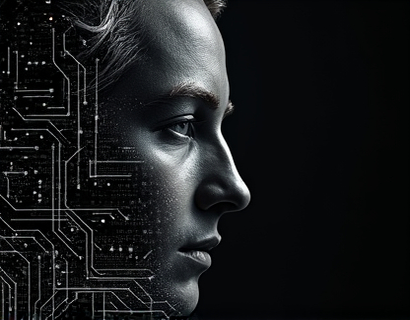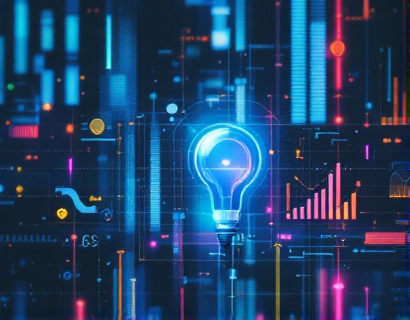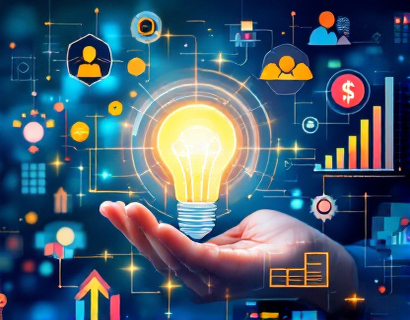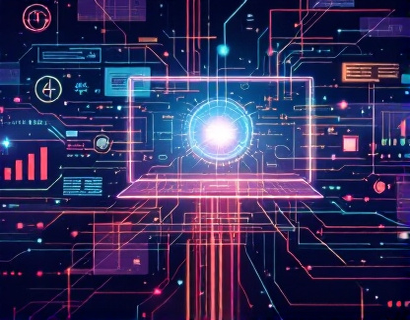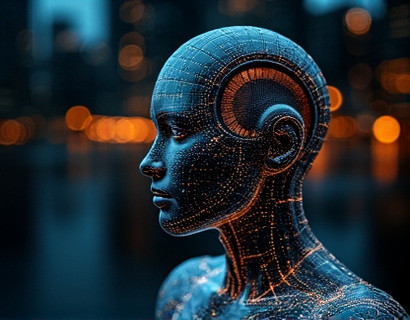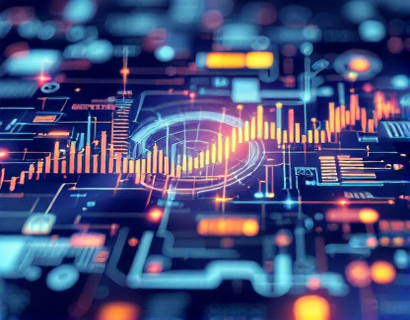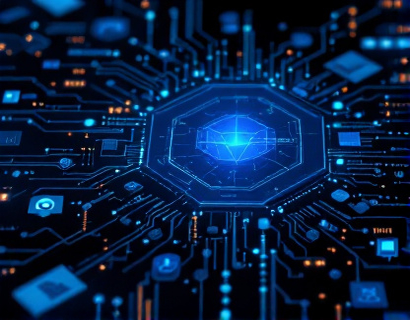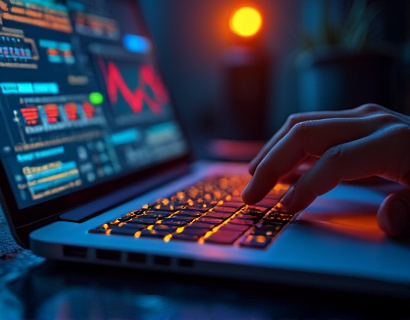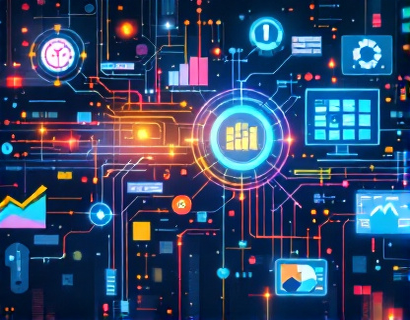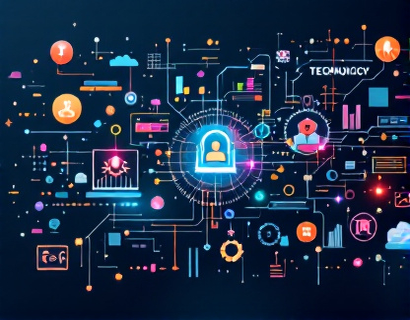Crypto AI Dynamics: Transforming Digital Experiences with Blockchain and Machine Learning
The intersection of blockchain technology and artificial intelligence (AI) is giving rise to a new era of digital transformation. This convergence is not just a technological curiosity but a powerful force reshaping how businesses operate and how users interact with digital services. As we delve into the dynamics of crypto AI, we explore how these technologies are redefining digital experiences and providing a robust roadmap for tech leaders to navigate the blockchain revolution.
Understanding Blockchain and AI
Before diving into the synergy between blockchain and AI, it's essential to understand each technology individually. Blockchain, at its core, is a decentralized ledger technology that ensures transparency, security, and immutability in transactions. It operates on a peer-to-peer network, eliminating the need for intermediaries and reducing the risk of fraud.
AI, on the other hand, encompasses a range of technologies designed to simulate human intelligence in machines. These include machine learning, natural language processing, and computer vision. AI's ability to analyze vast amounts of data, learn from patterns, and make decisions autonomously makes it a game-changer in various industries.
The Convergence of Blockchain and AI
The true potential of both blockchain and AI is realized when they converge. This synergy creates a powerful toolkit for developing secure, efficient, and intelligent digital solutions. The combination of blockchain's trustless and transparent nature with AI's analytical and adaptive capabilities opens up new possibilities in areas such as finance, supply chain, healthcare, and more.
Enhanced Security and Trust
One of the most significant benefits of combining blockchain and AI is the enhancement of security and trust in digital systems. Blockchain's immutable ledger ensures that data cannot be altered once recorded, providing a tamper-proof environment. AI can further bolster this by detecting anomalies and potential security threats in real-time, enabling proactive measures to protect sensitive information.
For instance, in financial transactions, AI algorithms can monitor blockchain-based transactions for unusual patterns that might indicate fraud. This dual-layer security approach not only safeguards data but also builds user confidence in digital platforms.
Optimized Data Processing and Analysis
AI's strength lies in its ability to process and analyze large datasets quickly and accurately. When integrated with blockchain, this capability is amplified. Blockchain provides a secure and transparent source of data, while AI can extract meaningful insights from this data to drive better decision-making.
In supply chain management, for example, blockchain can track the movement of goods from origin to destination, ensuring authenticity and reducing counterfeiting. AI can analyze this data to optimize logistics, predict demand, and enhance overall efficiency. The combination ensures that businesses have access to real-time, accurate data, leading to more informed and strategic decisions.
Personalized User Experiences
The integration of blockchain and AI also revolutionizes how digital services personalize user experiences. AI algorithms can analyze user behavior and preferences to offer tailored content, recommendations, and services. Blockchain ensures that this data is handled securely and that users maintain control over their personal information.
In the context of digital content platforms, AI can curate personalized news feeds, entertainment recommendations, and educational content. Blockchain ensures that user data is stored securely and that users can monetize their data through tokenization, giving them more control and incentives to engage with the platform.
Use Cases and Industry Impact
The potential applications of blockchain and AI are vast and varied, impacting multiple industries in transformative ways.
Finance and Banking
In the finance sector, the combination of blockchain and AI is reshaping traditional banking models. Smart contracts on blockchain can automate and enforce contractual obligations, reducing the need for intermediaries. AI can enhance risk management by analyzing vast amounts of financial data to predict market trends and identify potential fraud.
Decentralized finance (DeFi) platforms leverage these technologies to offer financial services such as lending, borrowing, and trading without traditional financial institutions. This democratizes access to financial services and reduces costs for users.
Healthcare
In healthcare, blockchain can secure patient data and ensure compliance with regulations like GDPR and HIPAA. AI can analyze medical records and research data to identify patterns, predict disease outbreaks, and personalize treatment plans. The integration of these technologies can lead to more efficient, secure, and patient-centric healthcare systems.
For instance, blockchain can create a secure and interoperable patient data network, while AI can process this data to provide insights for better diagnosis and treatment. This not only improves patient outcomes but also reduces healthcare costs.
Supply Chain and Logistics
The supply chain industry stands to gain significantly from the combination of blockchain and AI. Blockchain can provide end-to-end visibility and traceability of products, ensuring authenticity and reducing counterfeiting. AI can optimize supply chain operations by predicting demand, managing inventory, and streamlining logistics.
A prime example is the use of blockchain to track the provenance of luxury goods, ensuring they are genuine and ethically sourced. AI can analyze supply chain data to identify bottlenecks and inefficiencies, leading to more sustainable and cost-effective operations.
Challenges and Considerations
While the potential of blockchain and AI is immense, there are several challenges and considerations that tech leaders must address to fully harness their benefits.
Technical Complexity
Both blockchain and AI are complex technologies that require specialized knowledge to implement effectively. Organizations need to invest in skilled personnel or partner with experts to navigate the technical intricacies and ensure seamless integration.
Additionally, the interoperability of different blockchain platforms and AI systems can be a challenge. Standardization and open protocols are essential to facilitate seamless integration and collaboration.
Regulatory Environment
The regulatory landscape for blockchain and AI is still evolving. Compliance with data protection laws, anti-money laundering (AML) regulations, and other legal requirements is crucial. Tech leaders must stay informed about regulatory changes and ensure their solutions are compliant to avoid legal risks.
Engaging with policymakers and participating in industry forums can help shape regulations that foster innovation while protecting consumers and the public interest.
Ethical Considerations
The use of AI, especially in conjunction with blockchain, raises ethical questions about privacy, bias, and transparency. It's important for organizations to adopt ethical AI practices, ensuring that AI algorithms are fair, transparent, and do not perpetuate biases.
Blockchain's transparency can aid in building trust, but it's essential to balance this with user privacy. Implementing privacy-preserving techniques such as zero-knowledge proofs can help maintain user confidentiality while leveraging the benefits of blockchain.
Roadmap for Tech Leaders
For tech leaders looking to navigate the blockchain revolution, here is a roadmap to thrive in this new digital landscape:
1. Educate and Build Expertise
Invest in training and development to build a team with a deep understanding of blockchain and AI. This includes technical skills as well as strategic insights into how these technologies can transform your business.
2. Pilot Projects and Proof of Concepts
Start with small-scale pilot projects to explore the potential of blockchain and AI in your specific domain. This allows you to test concepts, identify challenges, and refine approaches before scaling up.
3. Foster Collaboration and Ecosystems
Collaborate with other organizations, research institutions, and technology providers to build a robust ecosystem. This can accelerate innovation and provide access to a wider range of tools and expertise.
4. Focus on User-Centric Design
Ensure that your blockchain and AI solutions are designed with the user in mind. Focus on creating intuitive, secure, and value-adding experiences that enhance user engagement and satisfaction.
5. Stay Agile and Adaptive
The tech landscape is rapidly evolving, and staying agile is crucial. Monitor industry trends, technological advancements, and regulatory changes to adapt your strategies accordingly.
6. Prioritize Security and Privacy
Security and privacy should be paramount in your blockchain and AI initiatives. Implement robust security measures and adhere to best practices to protect user data and maintain trust.
Conclusion
The convergence of blockchain and AI is a transformative force that is redefining digital experiences and business operations. By enhancing security, optimizing data processing, and enabling personalized user experiences, these technologies offer unprecedented opportunities for innovation and growth. Tech leaders who embrace this convergence and navigate the associated challenges will be well-positioned to thrive in the blockchain revolution.



